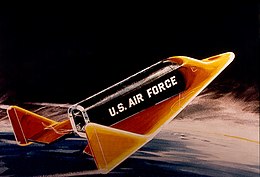- Joined
- Aug 27, 2011
- Messages
- 11,612
- Reaction score
- 6,241
Nice nails, too!

Nice nails, too!
I'm interested in the C11, as I'm intending to use it myself. Was the total weight of your rocket under 6 oz.?Got two really nice flights on this today. One was on the C11-3, first time I have used this motor (I think). The narrator needs a Gibb Slap, it was really a 24 mm C11-3, not a C5-3. Didn't get a lot of altitude but pretty darn good for a demo.
Alas, @Dotini , I am failing to emulate your Magnus effect. I had expected a bunch with this, due to the larger diameter. But either my small tube fins are sufficient to get this horizontal but not spinning fast enough to generate a lateral Magnus effect, or the Magnus effect is independent of diameter (I doubt the latter.)
Likely true, but unsure of a practical means of measuring RPM.I'm interested in the C11, as I'm intending to use it myself. Was the total weight of your rocket under 6 oz.?
With regard to the Magnus Effect, I'm still experimenting. However, I'm beginning to suspect that the ratio of fin span (and area) to tube diameter/mass affects the ultimate rpm achievable. I think what we want to do is optimize both factors in the equation, and so far we've made two stabs in the dark. More rpm multiplied by more tube diameter/area equates to more Magnus Effect. However, it either factor is too small or too large, the Effect will be smaller.
1) RPM should be fairly easy to approximate. Just track the rocket on video, count the number of times it spins per second according to the timer on the video, then do the arithmetic. If necessary, go frame by frame. It greatly helps to see and count if the center of rocket is white/black, and the two ends (offsetting the central white section) are black. You could likely substitute for white with yellow, silver or chrome.Likely true, but unsure of a practical means of measuring RPM.
At this point, the Magnus effect, when it occurs (I have only convincingly seen it on YOUR rockets, I am envious!), is definitely cool but doesn’t seem to have much practical value (I am not convinced it slows rocket DESCENT rate, it seems to be truly LATERAL to the fall vector). The SPIN however is DEFINITELY effective in slowing the rocket by shifting from “pointy end first” to “falling sideways.” I think that’s about the maximum drag orientation you can obtain with a rocket without physically altering the rocket contours (deploying a nose cone, chute, streamer, rotors, brakes, or breaking the rocket into segments.). I also think it BEATS tumble recovery. Tumble recovery presents and AVERAGE of ALL possible rocket orientations, so TUMBLE beats ballistic, but Horizontal Spin beats tumble.
Turbinator was 170 grams without motor, so just at 6 oz without the motor casing.
Wild idea interlude:Horizontal Spin beats tumble.

No question, having now seen 6 “true” (no streamer or other cheats) backslide recoveries, it is much gentler in “down” velocity than horizontal spin. But in a sense, like horizontal spin, it does have a con (I was gonna say “downside”, but that would be confusing.) it comes in with a moderate “backward” velocity, which when built in traditional way (e.g., the Alway design previously posted) tends to break a fin off (as opposed to regular gliders and super duper fancy like @burkefj does, which come in with forward velocity but usually have a relative flat undersurface that slides a bit.). This is where I think the addition of the asymmetric fin design will shine, IF I can consistently get the balance right. Not sure the typical RSO will be too keen when told, “4 out of 5 times it backslides, the other time it lawn darts.” Although maybe @Daddyisabar has some tips on swaying RSOs?Wild idea interlude:
But what about backsliding, does it beat tumble? For that matter, what about backgliding? Let's launch a suitable but known gliding body backwards.

Boeing X-20 cartoon
Put a long extension/weight out the back of this, launch it backwards, then jettison some of the weight (nose-cone, streamer, altimeter) at apogee, but keep it attached with a very long, thin and light cord.
I'll go with this. I'm a big fan of overkill when it comes to safe, easy and reliable recoveries.“Cheating” may be too strong a word for adding a streamer, I think that with a streamer you will get a nice backslide 100% of the time. It’s almost TOO easy, and combined with asymmetric fins almost unbreakable, as the rocket will impact on the motor casing in a shallow dive.
Likely true, but unsure of a practical means of measuring RPM.
At this point, the Magnus effect, when it occurs (I have only convincingly seen it on YOUR rockets, I am envious!), is definitely cool but doesn’t seem to have much practical value (I am not convinced it slows rocket DESCENT rate, it seems to be truly LATERAL to the fall vector). The SPIN however is DEFINITELY effective in slowing the rocket by shifting from “pointy end first” to “falling sideways.” I think that’s about the maximum drag orientation you can obtain with a rocket without physically altering the rocket contours (deploying a nose cone, chute, streamer, rotors, brakes, or breaking the rocket into segments.). I also think it BEATS tumble recovery. Tumble recovery presents and AVERAGE of ALL possible rocket orientations, so TUMBLE beats ballistic, but Horizontal Spin beats tumble.
Turbinator was 170 grams without motor, so just at 6 oz without the motor casing.
Practice makes perfect!Congratulations on your ability to always hit the concrete that is surrounded by acres of grass, I though I was the only one that could pull that off.
Enter your email address to join: